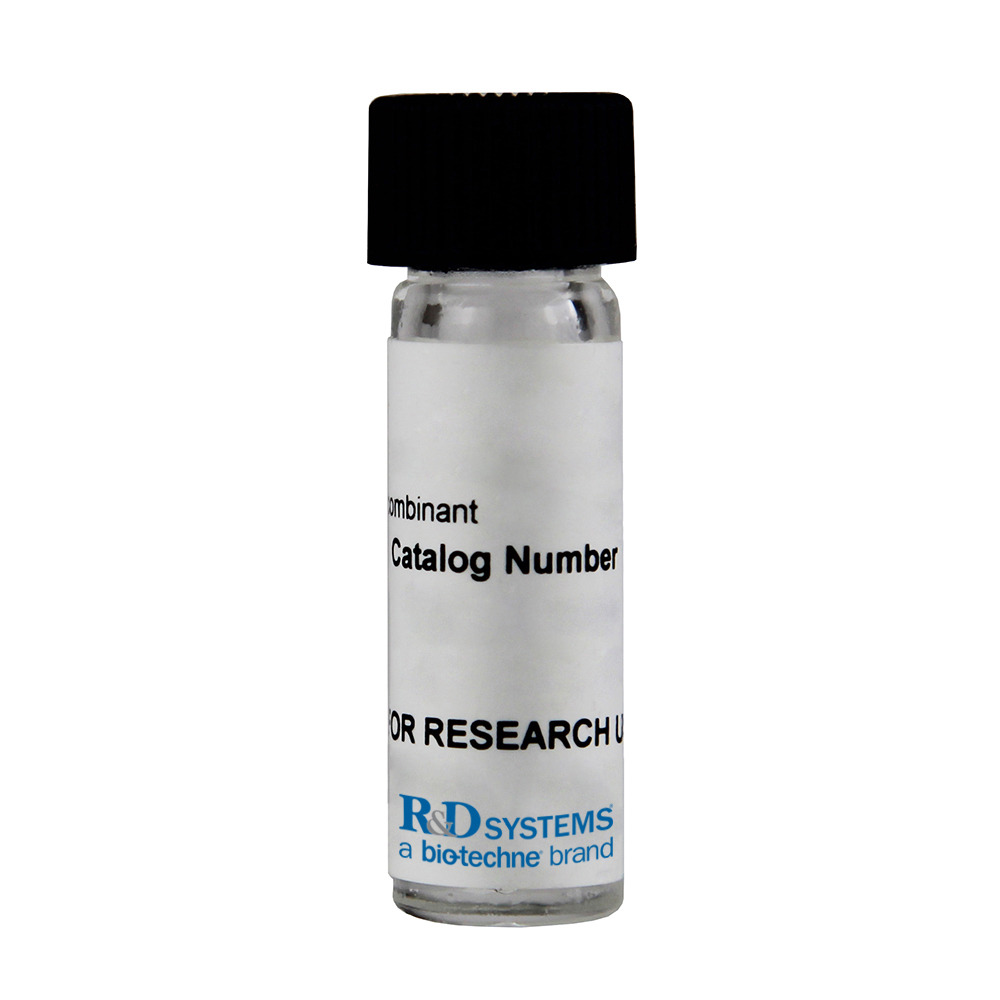

 下载产品说明书
下载产品说明书 下载SDS
下载SDS 用小程序,查商品更便捷
用小程序,查商品更便捷



 收藏
收藏
 对比
对比 咨询
咨询Carrier Free
CF stands for Carrier Free (CF). We typically add Bovine Serum Albumin (BSA) as a carrier protein to our recombinant proteins. Adding a carrier protein enhances protein stability, increases shelf-life, and allows the recombinant protein to be stored at a more dilute concentration. The carrier free version does not contain BSA.
In general, we advise purchasing the recombinant protein with BSA for use in cell or tissue culture, or as an ELISA standard. In contrast, the carrier free protein is recommended for applications, in which the presence of BSA could interfere.
3438-SE
| Formulation | Supplied as a 0.2 μm filtered solution in Tris and NaCl. |
| Shipping | The product is shipped with polar packs. Upon receipt, store it immediately at the temperature recommended below. |
| Stability & Storage: | Use a manual defrost freezer and avoid repeated freeze-thaw cycles.
|
Recombinant Human DPPII/QPP/DPP7 Protein, CF Summary
Product Specifications
Gly22-Leu492, with a C-terminal 10-His tag
Analysis

Background: DPPII/QPP/DPP7
Dipeptidyl-peptidase II (DPPII) is identical to quiescent cell proline dipeptidase (QPP) and dipeptidylpeptidase 7 (DPP7) (1, 2). It shares some substrate and cleavage specificity with DPPIV/CD26, DPP8, DPP9 and seprase/FAP (fibroblast activation protein), members of the S09 family of serine proteases. As prolyl proteases that cleave proteins and peptides after proline residues, these enzymes have high potential for drug discovery (3, 4). However, DPP7 is not a member of the S09 family, but a member of the S28 family that also includes lysosomal Pro‑X carboxypeptidase/prolylcarboxypeptidase/PRCP and thymus-specific serine peptidase/PRSS16 (2). The human DPP7 precursor consists of a signal peptide (aa 1‑21) and a mature chain (aa 22‑492). The purified rhDPP7 is active against Lys‑Pro-AMC and Lys‑Ala-AMC. Its activity against Lys‑Pro‑AMC is approximately 10-fold of that against Lys‑Ala‑AMC under otherwise identical conditions.
- Underwood, R. et al. (1999) J. Biol. Chem. 274:34053.
- Maes, M.B. et al. (2005) Biochem. J. 386:315.
- Rosenblum, J.S. and J.W. Kozarich (2003) Curr. Opin. Chem. Biol. 7:496.
- Lankas, G.R. et al. (2005) Diabetes 54:2988.








 危险品化学品经营许可证(不带存储) 许可证编号:沪(杨)应急管危经许[2022]202944(QY)
危险品化学品经营许可证(不带存储) 许可证编号:沪(杨)应急管危经许[2022]202944(QY)  营业执照(三证合一)
营业执照(三证合一)